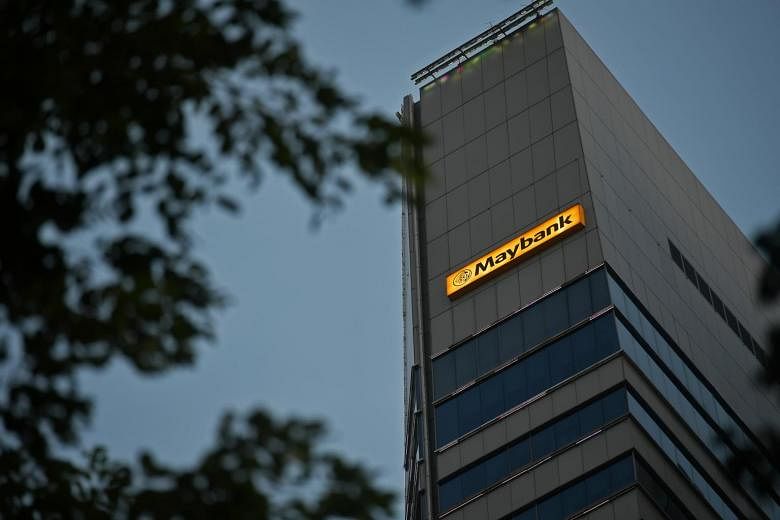SINGAPORE - Maybank analysts said the Monetary Authority of Singapore (MAS) is likely to reduce the slope of the Singapore dollar nominal effective exchange rate (S$NEER) to 0.5 per cent from the current 1 per cent appreciation path at its upcoming policy review.
This will imply a slight slowdown in the annual pace of appreciation of Singapore's exchange rate against a basket of currencies.
Meanwhile, MAS is likely to keep the width and centre of the S$NEER policy band unchanged, Maybank analysts Chua Hak Bin and Lee Ju Ye said in their report.
They assigned an 80 per cent probability to this prediction, given a stagnating economy and low core inflation.
Mr Chua and Ms Lee wrote that Singapore's economy likely dodged a technical recession - two straight quarters of economic contraction - with its Q3 gross domestic product (GDP) growth predicted to come in at a sluggish 0.2 per cent year on year.
This will barely be an improvement from Q2's nearly flat growth of 0.1 per cent. In August, the official full-year growth forecast was also cut to between zero and 1 per cent for 2019. Meanwhile, core inflation remained at a three-year low of 0.8 per cent in August amid lower energy prices.
Maybank's forecast is in line with those issued earlier by OCBC and DBS. Analysts from the latter two banks likewise expect MAS to ease its monetary policy stance by decreasing the policy band's slope to 0.5 per cent at the mid-October meeting.
If implemented, this will be the central bank's first easing move since April 2016. It will come after two consecutive rounds of tightening in April and October last year, when MAS made a slight increase in the slope of the policy band.
However, Maybank said it cannot rule out a more aggressive move if the city-state falls into a technical recession in Q3, in which case MAS may put the S$NEER to a zero appreciation path. The analysts said there is a low 20 per cent probability for this scenario to occur.
This year, Maybank expects core inflation, which strips out accommodation and private road transport costs, to remain soft by averaging 1.2 per cent, down from 1.7 per cent in 2018. The 1.2 per cent level will be near the lower end of MAS's forecast range of 1 to 2 per cent.
Headline inflation will likely average 0.7 per cent this year, up from 0.4 per cent last year, supported by the low base effects of COE (certificate of entitlement) prices, the Maybank analysts said. This is also at the lower end of MAS's forecast range of 0.5 to 1.5 per cent.
Risks to inflation remain on the downside as the US-China trade war continues to dampen commodity prices and diverts excess capacity to other countries, while a weak yuan lowers prices of made-in-China products, they added. A softening job market is also cooling wage cost pressures.
Meanwhile, the three-month Sibor (Singapore Interbank Offered Rate) is expected to stand at 1.6 per cent at end-2019 and 1.4 per cent at end-2020, amid continued easing by the US Federal Reserve, Maybank noted. The three-month Sibor is at 1.88 per cent, down slightly from 2 per cent in Q2.
"We expect the Fed to cut by 25 basis points in December, followed by another cut in the first half of 2020," Mr Chua and Ms Lee wrote.

